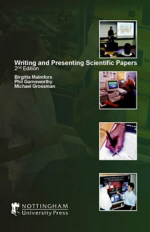



Writing and Presenting Scientific Papers
GLOBAL - What is the point of researching issues of animal health, welfare or production practices if the results and the message are not delivered to the public at large?For many the question of getting the message across precisely, accurately and in a way that will capture an audience becomes the stumbling block of the research.
Three animal scientists - Birgitta Malmfors Associate Professor in Animal Breeding and Genetics at the Swedish University of Agricultural Sciences, Uppsala, Phil Garnsworthy a Senior Lecturer in Animal Production at the University of Nottingham, UK and Michael Grossman is a Professor in the Departments of Animal Sciences and Statistics at the University of Illinois at Urbana-Champaign, USA - have compiled a guide for researchers spelling out to researchers how to get their message across.
The aim of this book, Writing and Presenting Scientific Papers, which is now in its second edition, is to provide guidelines for preparing papers and presentations so that the message can be transmitted clearly and concisely to the reader or listener.
There are many types of scientific communication, the principal ones being journal papers and popular science articles, as well as oral and poster presentations.
In each case, the ABC of science communication is that it should be Accurate and Audience-adapted, Brief and Clear.
Techniques for improving writing, literature searching and training students in communication are also discussed.
In this revised edition a few more topics have been added, such as electronic submission of manuscripts, writing statistics, and writing research proposals.
This book is designed to benefit young scientists presenting their first research results, experienced scientists wanting to make their communications more effective, university students at all levels, and teachers involved in the instruction of communication skills.
The book covers communicating science, sections of a scientific paper, tables and figures, other types of scientific writing, getting started in writing, improving writing, writing statistics, literature searching and referencing, getting a paper into print, oral presentation and visual displays, poster presentation, training students in writing and presentation and reviewing papers and presentations.
Each of the authors has written many scientific papers, reports and articles, and has made regular presentations at international conferences and meetings. Each has many years' experience of teaching and training students in effective communication.
The new edition of Writing and Presenting Scientific Papers, published by Nottingham University Press is available from 5m Publishing via 5mRetail.com.
Click here to order the book.










